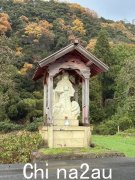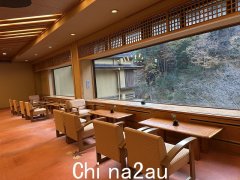From http://www.artgallery.nsw.gov.au/
The Art Gallery of New South Wales is the leading museum of art in New South Wales and Sydney, and one of Australia's foremost cultural institutions. It holds significant collections of Australian, European and Asian art, and presents nearly forty exhibitions annually.
ADDRESS
Art Gallery Road, The Domain, Sydney NSW 2000, Australia
OPENING HOURS
Open every day*: 10am - 5pm
Late closing every Wednesday: 9pm (Art After Hours)
(* except Good Friday and Christmas Day)
ADMISSION FREE
Charges apply to some exhibitions.
PHONE / FAX / EMAIL
[For international phone/fax access, substitute (02) below with + 612]
General Switchboard: (02) 9225 1700
Information Desk: (02) 9225 1744
General Fax: (02) 9225 1701
What's On Line: (02) 9225 1790 (Recorded Message)
Australia-wide toll-free number: 1800-NSW-ART (1800-679-278)
General Email: [email protected]
[ 本帖最后由 jasonnewman 于 2007-8-2 22:21 编辑 ]
评论
评论
评论
[ 本帖最后由 jasonnewman 于 2007-8-2 19:02 编辑 ]
评论
评论
评论
评论
评论
评论
评论
评论
评论
评论
评论
评论
评论
评论
评论
[ 本帖最后由 jasonnewman 于 2007-8-2 19:34 编辑 ]
评论
真想去看看。
lz的照片照的真不错。原来馆内可以照相的。
评论
评论
Flashgun not allowed though.
评论
评论
评论
评论
评论
评论
评论
Sir Edward John Poynter (England, b.1836, d.1919)
The visit of the Queen of Sheba to King Solomon
Other titles
The Queen of Sheba before Soloman
1890
Painting
oil on canvas
234.5 x 350.5 x 20.5cm frame
Purchased 1892
898
Further Information
When contemplating this picture it is useful to bear in mind that the second half of the nineteenth century was a period remarkable for archaeological researches and discoveries, especially by English expeditions. The British Museum was a treasure house of antiquities increasingly valued by artists as a reference library. Egypt and the Middle East replaced Greece and Italy as the focus of curiosity. 'The visit of the Queen of Sheba to King Solomon' can be contextualised against a craze for orientalist narratives in literature, music and visual art. The wildly composite architectural system of Solomon's temple is reprised in the frame, which bridges the temporal and spatial distance between viewer and subject. The artist has been so obsessed with the accuracy of his details, however, that the figures seem somewhat doll-like. Trained in Paris under Gleyre, Poynter was at heart a Salonist for whom artistry resided in weight of detail rather than dramatic synthesis.
AGNSW Handbook, 1999.
Provenance
Thomas McLean Gallery (England), London/England, Purchased by the AGNSW from Thomas McLean Gallery 1892. Purchased by Thomas McLean from the artist 1890.
Also...
The Queen of Sheba
An ancient queen like you've never seen
An abrupt blaring of trumpets! A shrill shrieking of peacocks! And suddenly - time is no more. The Queen of Sheba steps from the frame of the magnificent painting, The Visit of the Queen of Sheba to King Solomon by Edward Poynter. In a dazzle of jewels, feathered flabellums and sassy witticisms, the Queen leads deliciously sassy tours through the Gallery's Old Courts.
Written by Geoffrey McSkimming
Directed by Robina Beard
Performed by Fatima Palces
Every Sunday
20 May - 26 August 2007
(Except 8 July)
11.30am & 1.45pm
For more information please visit www.gallerykids.com.au/characters/sheba
[ 本帖最后由 jasonnewman 于 2007-8-6 21:25 编辑 ]
评论
From http://www.victorianweb.org/painting/poynter/paintings/16.html
Commentary by George P. Landow
...
As Angus Trumble explains, Poynter conceived his picture within an architectural apparatus of startling complexity and truthfulness both to literary sources — the Book of Kings mentioned costly stone foundations, pillars and beams made from cedars of Lebanon, lavish ornamentation of gold and brass, and the King's magnificent ivory throne with its six steps flanked by twelve lions — and to evidence made available by archaeological excavations in Mesopotamia and other parts of the Near East. It swarmed with detail, figures and objects, even animals, that brought to life the legendary court of King Solomon, son of King David, heir to the Kingdom of Israel, builder of the Temple in Jerusalem.
The Old Testament account of the visit of the Queen of Sheba to King Solomon has been interpreted and reinterpreted in the light of changing historical circumstances and values ever since it was first told. According to the Book of Kings rumours reached the Queen of Sheba concerning the fame of King Solomon. Boldly, she came to test his mind and wisdom with riddles. To her questions Solomon provided answers, meeting her symbolic challenge with all the power and prestige and authority of a Jewish king of Israel. The Queen of Sheba was overwhelmed by the impact of "all the wisdom of Solomon, the house that he had built, the food of his table, the seating of his officials and the attendance of his servants, their clothing, his cupbearers, and his burnt offerings," such that "there was no more spirit in her."
The setting is the great reception hall in the palace of King Solomon, which the critics unanimously applauded as a tour-de-force of learned architectural reconstruction. Assyrian and Persian discoveries provided Poynter with a great deal of material with which to work on decorative details and furnishings. The lions were copied from exempla in the collections of the British Museum, as were Egyptian musical instruments and the dozens of plates, cups, bowls, and other vessels being inspected by one of peace strutting in the right foreground. Nor was Poynter's imagination constrained by the absence of genuine Israelite antiquities to incorporate into the huge composition. The ivory throne was largely his own invention, as were most of the costumes, intelligently informed by extensive historical research, a host of preparatory drawings and a scale model the architecture which Poynter had constructed so that might observe in three dimensions various effects of light with maximum precision throughout the long period in which he laboured over the painting. [p. 166]
Like Hunt, Laurence Alma-Tadema, Edwin Long, Poynter used a combination of research and imagination to create a scene from ancient life. Like these three other painters, his extraordinarily detailed rendering of a scene from the ancient Near East used the techniques and assumptions of modern realism to permit spectators to experience life in the ancient past. Unlike Hunt but like Tadema and Long, Poynter, who just wanted an accurate representation of an ancient event, had no interest in using biblical symbolism to prophecy the coming of Christianity or to turn the scene into one that existed both as an historical event and as a form of mystical experience. Such an approach, unlike Hunt's (or Millais's in his early Christ in the House of His Parents), made The Visit of the Queen of Sheba to King Solomon far more accessible to late-Victorian audiences.
Despite this fundamentally different approach to depicting scriptural events, this painting shares some interesting similarities to Hunt's Finding: each painting has an outsider — Poynter's Queen of Sheba and Hunt's young Jesus — enter a lavishly rendered space within which the encounters confronts those in power and then reacts to that experience: typically, Hunt, the rebel, has the young Jesus experience an epiphany in which he first recognizes his own power whereas the conservative Poynter presents his outsider as awed, even cowed, by the establishment. Each man ends up revealing a great deal about his stance toward society and those in power.
[ 本帖最后由 jasonnewman 于 2007-8-2 23:25 编辑 ]
澳洲中文论坛热点




